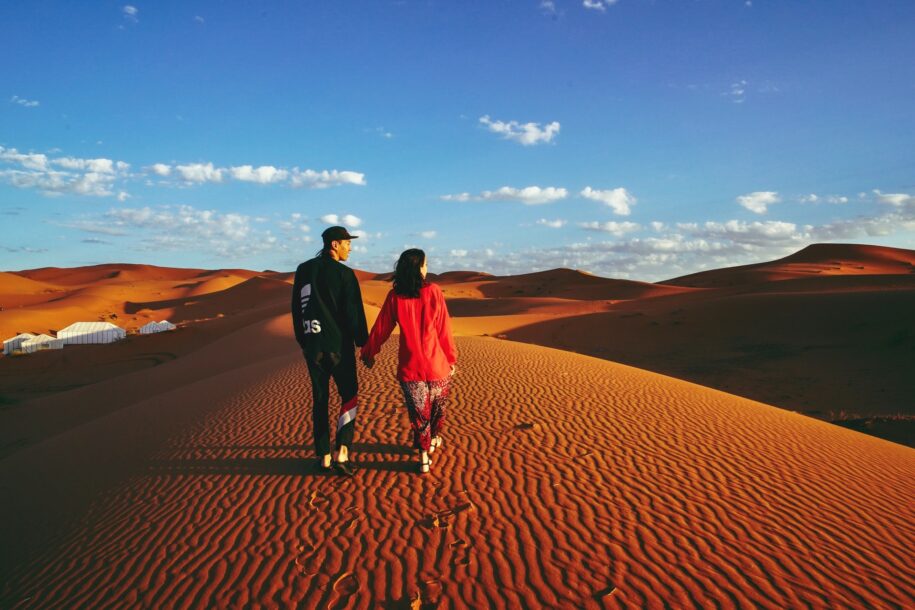Do girls need to cover up in Morocco
Travelling to Morocco is an exciting adventure that promises rich cultural experiences, breathtaking landscapes and vibrant markets. As a female traveller, it’s important to be aware of local customs and traditions, especially when it comes to dress. While Morocco is a diverse and modern country, its predominantly Muslim population follows certain dress codes influenced by religious and cultural values. This blog post aims to provide guidance on how to dress respectfully and comfortably as a female traveller in Morocco.
Understand cultural sensitivities:
Before embarking on your trip to Morocco, it’s important to research and understand the country’s cultural norms and practices. Morocco is a blend of old and new, with many people dressing in both traditional and Western styles. While cities such as Marrakech and Casablanca are more cosmopolitan and open to diverse fashion choices, rural areas and smaller towns tend to adhere more strictly to traditional dress codes. It’s respectful to acknowledge and honour these local customs, especially in conservative regions.
Appropriate clothing:
Cover your shoulders and knees: Modesty is valued in Morocco. It’s generally recommended that women wear clothing that covers their shoulders and knees. Long skirts, loose trousers and maxi dresses are good options. Tops should have sleeves and a modest neckline.
Avoid tight and revealing clothing: To show respect for local values, avoid wearing clothing that is overly tight or revealing. This includes low-cut tops, shorts and clothing that hugs the body.
Traditional vs. modern dress: While it’s not mandatory for female travellers to wear traditional Moroccan clothing, you can opt for more culturally inspired attire if you wish. A popular choice is the ‘djellaba’, a long robe-like dress often worn by Moroccan women. This can be a comfortable and respectful option, especially in more conservative areas.
Accessories and scarves: Carrying a scarf or shawl is a versatile way to adapt your outfit to the situation. You can drape it over your shoulders, cover your head when visiting religious sites or use it to protect yourself from the sun.
Swimwear: If you’re at the beach or a pool, it’s acceptable to wear swimwear. However, when you’re out of the water, it’s a good idea to cover up with a cover-up or sarong.
Footwear: Morocco involves a lot of walking and exploring, so comfortable closed-toe shoes are ideal. Sandals are acceptable in more touristy areas, but it’s wise to avoid flip-flops in urban areas.
Respect local traditions:
When adapting your clothing choices, remember that the goal is to respect and engage with the local culture. Not only will you have a more authentic experience, but you will also create positive interactions with the locals. Your efforts to blend in and show appreciation for their way of life are likely to be met with warmth and hospitality.
Do girls need to cover up in Morocco
Colours and patterns: Moroccan fashion is known for its vibrant colours and intricate patterns. Embrace this cultural richness by incorporating colourful scarves, shawls or accessories into your outfits. However, be careful not to wear anything that could be considered culturally insensitive or offensive.
Layering: Layering can be a practical and respectful way to dress for different situations. You can wear a lightweight, long-sleeved top under a sleeveless dress, or combine a cardigan with a blouse for extra coverage.
Local inspiration: If you’re interested in immersing yourself in Moroccan fashion, consider buying some items locally. Markets offer a variety of traditional clothing, textiles and accessories that can help you blend in while celebrating the local culture.
Head coverings: While it’s not compulsory for non-Muslim women to cover their heads, it’s a good idea to carry a scarf or shawl to drape over your head when entering religious sites out of respect. Some women also choose to cover their heads when interacting with locals in very conservative areas.
Adapting to different locations: As mentioned above, larger cities such as Marrakech and Casablanca are more used to a mix of fashion styles. However, if you’re planning to visit smaller villages or remote areas, it’s best to stick to conservative clothing to avoid unintentional offence.
Cultural sensitivity: Dressing respectfully goes hand in hand with behaving respectfully. Remember to be polite and considerate when dealing with the locals. Greeting people with a smile and a simple Arabic greeting (“Salam alaikum”) can go a long way in establishing positive relationships.
Climate considerations: Morocco has a range of climates, from coastal to desert. Plan your clothing accordingly to stay comfortable while adhering to cultural norms. Loose and breathable fabrics are ideal for warmer regions, while a light jacket or sweater is recommended for cooler evenings.
Local feedback: If you’re unsure about the appropriateness of your outfit, don’t hesitate to ask locals or your accommodation staff for advice. They’ll probably appreciate your efforts to respect their culture and may be able to offer valuable insights.
Remember, the goal is not to lose your personal style, but to adapt it in a way that shows cultural sensitivity and respect for local customs. By blending in and engaging with the culture in a thoughtful way, you’ll not only have a more enriching travel experience, but also make a positive contribution to interactions between travellers and the local community.
Do girls need to cover up in Morocco


Leave a Reply